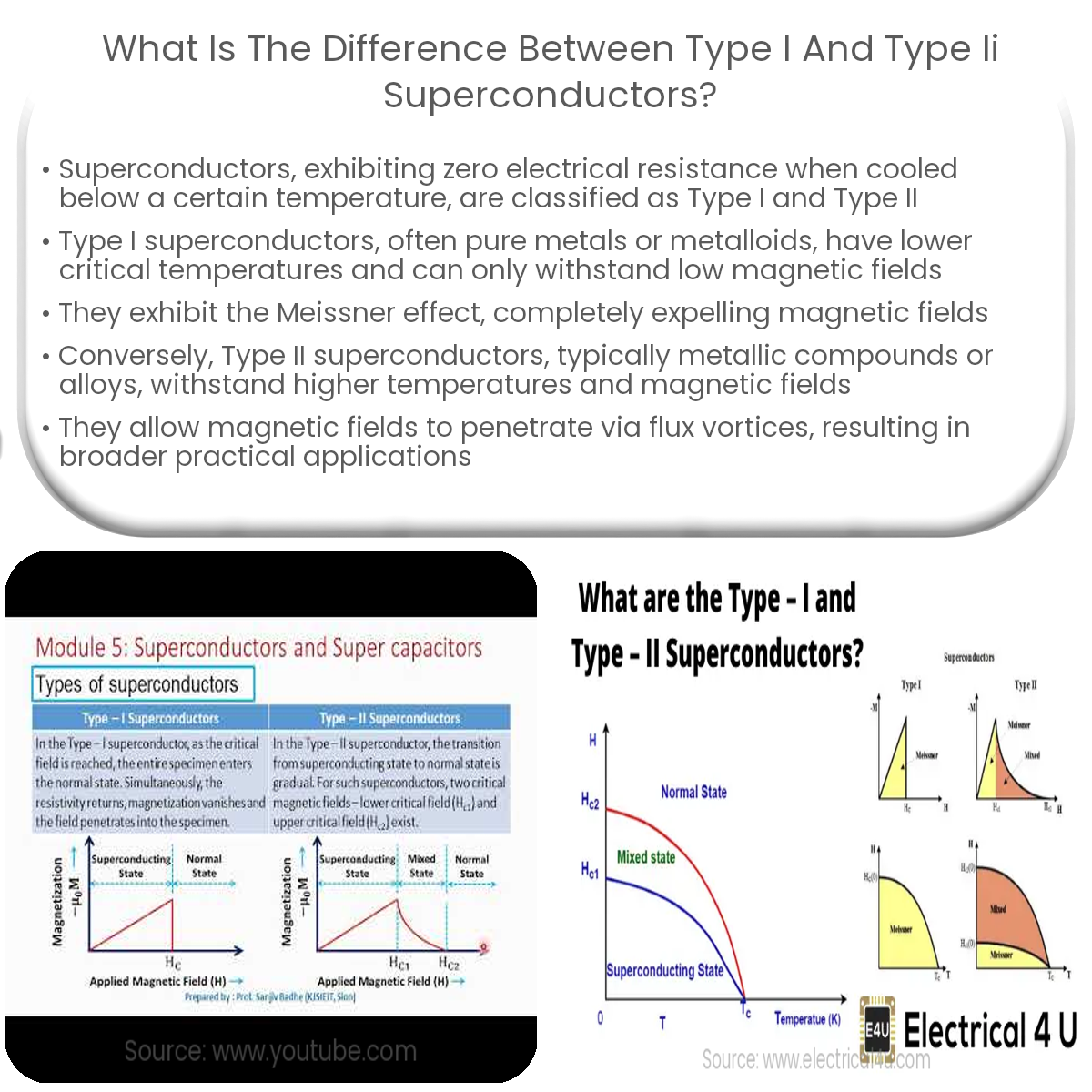Type I superconductors are pure metals with low critical temperatures, while Type II are metallic compounds or alloys with higher critical temperatures.
Type I and Type II Superconductors: Key Differences
Superconductors are materials that exhibit zero electrical resistance when cooled below a certain critical temperature. They are classified into two main types: Type I and Type II. This article highlights the key differences between these two types of superconductors.
Type I Superconductors
Type I superconductors are usually pure metals or metalloids that exhibit superconductivity at relatively low critical temperatures. Some common examples include mercury, aluminum, and lead. When the temperature of a Type I superconductor is lowered below its critical temperature, it completely expels any magnetic field, a phenomenon known as the Meissner effect.
However, Type I superconductors can only withstand low magnetic fields before losing their superconducting properties. When the external magnetic field exceeds a critical value called the critical magnetic field, superconductivity is destroyed, and the material reverts to its normal conducting state.
Type II Superconductors
Type II superconductors are typically composed of metallic compounds or alloys. They have higher critical temperatures and can withstand much higher magnetic fields compared to Type I superconductors. Examples of Type II superconductors include niobium-tin (Nb3Sn) and yttrium barium copper oxide (YBCO).
Unlike Type I superconductors, Type II superconductors do not exhibit a complete Meissner effect. Instead, they allow magnetic flux to penetrate the material through tiny channels called flux vortices. The magnetic field is not entirely expelled but is confined within these vortices. This characteristic allows Type II superconductors to maintain their superconducting properties in much higher magnetic fields.
Type II superconductors have a more complex relationship between magnetic field strength and superconductivity. They exhibit two critical magnetic fields: Hc1 and Hc2. Between these two values, the material is in a mixed state, partially superconducting and partially normal conducting. When the magnetic field exceeds Hc2, superconductivity is lost.
Summary
- Type I superconductors are generally pure metals or metalloids with low critical temperatures and low critical magnetic fields.
- Type II superconductors are metallic compounds or alloys with higher critical temperatures and higher critical magnetic fields.
- Type I superconductors completely expel magnetic fields (Meissner effect), while Type II superconductors allow magnetic fields to penetrate through flux vortices.
- Type II superconductors are more widely used in practical applications due to their ability to withstand higher magnetic fields and operate at higher temperatures.


